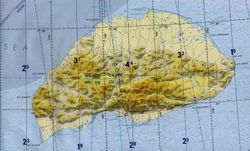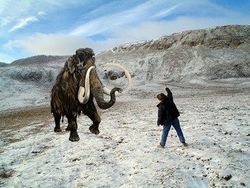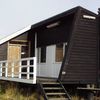12.6.2009 | 14:03
Stjórnin hefur stađiđ sig vel ţó skuggaöflin segi annađ.
Nú veit ég ekki hvort almenningur trúir undirróđri skuggaaflanna á Íslandi um ađ stjórnin geri ekkert ađ gagni og ađ ţađ sé hún sem er ađ fara međ allt til Helvítis.
Halló, allt var fariđ ţangađ ţegar hún tók viđ og ţó hún sé ađeins komin hálfa leiđ til baka, ekki henni ađ kenna hvađan hún kom. Ég veit ekki neitt ámátlegra en útburđarvćl ţeirra sem var hent út svo ţađ vćri hćgt ađ bjarga landinu.
Minnir helst á trega Kommúnista austur Evrópu ţegar ţeim var hent á öskuhauganna.
Lifiđ heil og megi Steingrímur og Eva vernda ykkur sem lengst.
Ingimundur Kjarval
Stjórnmál og samfélag | Breytt s.d. kl. 14:27 | Slóđ | Facebook | Athugasemdir (0)
12.6.2009 | 00:01
Ekki vissi ég ţetta ţó ég ţykist vita margt.
Mikiđ varđ ég hissa ţegar ég greip í tímaritiđ National Geograpic á lćknastofu í dag og komst ađ ţví ađ ullarfílar lifđu á Wrangler eyju allt til 1700 fyrir Kristburđ. Alltaf velt fyrir mér örlögum ţeirra og spekúlerađ hvort hćgt vćri ađ endurlífga ţá. Skilst ađ ţađ sé hćgt međ nútímatćkni. Ţegar ég googlađi eyjuna kom í ljós ađ Vilhjálmur Stefánsson, kanadíski vestur Íslendingurinn stóđ tvisvar fyrir leiđöngrum ţangađ sem enduđu báđir illa:
Wrangel Island
During the last ice age, woolly mammoths (Mammuthus primigenius) lived on Wrangel Island in the Arctic Ocean. It has been shown that mammoths survived on Wrangel Island until 1700 B.C.E., the most recent survival of any known mammoth population. They also survived on Saint Paul Island in the Bering Sea until 6000 B.C.E.[9] Wrangel Island is thought to have become separated from the mainland by 12,000 years BP. Survival of a mammoth population may be explained by local geographic, topographic and climatic features, which entailed preservation of communities of steppe plants, as well as a degree of isolation sufficient to delay colonization by humans. St. Paul Island shares this characteristic of geographic isolation, implying that human hunting played a role in the disappearance of the woolly mammoth. Wrangel Island mammoths ranged from 180-230 cm in shoulder height and were for a time considered "dwarf mammoths".[10] However this classification has been re-evaluated and since the Second International Mammoth Conference in 1999, these mammoths are no longer considered to be true "dwarf mammoths".
http://en.wikipedia.org/wiki/Dwarf_elephant
Stefansson expedition survivors
In 1914, the survivors of the ill-equipped Canadian Arctic Expedition, organized by Vilhjalmur Stefansson, were marooned there for nine months after their ship, the Karluk, was crushed in the ice pack[11]. The survivors were rescued by the American motorized fishing schooner King & Winge[12] after Captain Robert Bartlett walked across the Chukchi Sea to Siberia to summon help.
[edit]1921 Second Stefansson expedition fiasco
In 1921 Wrangel Island would become the stage for one of history's tragedies when Stefansson sent five settlers (one Canadian, three Americans, and one Inuit) in a speculative attempt to claim the island for Canada[13]. The explorers were handpicked by Stefansson based upon their previous experience and academic credentials. Stefansson considered those with advanced knowledge in the fields of geography and science for this expedition. At the time, Stefansson claimed that his purpose was to head off a possible Japanese claim [14]. The initial group consisted of Allan Crawford of Canada, and Fred Maurer, Lorne Knight and Milton Galle of the US. An attempt to relieve this group in 1922 was thwarted when the schooner Teddy Bear under Captain Joe Bernard became stuck in the ice [15]. In 1923, the sole survivor of the Wrangel Island expedition, the Inuk Ada Blackjack, was rescued by a ship that left another party of 13 (American Charles Wells and 12 Inuit). In 1924, the Soviet Union removed the members of this settlement and established the settlement that survives to this day on the island.
Stjórnmál og samfélag | Breytt s.d. kl. 01:42 | Slóđ | Facebook | Athugasemdir (0)





 bjarnihardar
bjarnihardar
 gmaria
gmaria
 hildurhelgas
hildurhelgas
 jensgud
jensgud
 magnusthor
magnusthor
 mal214
mal214
 pjeturstefans
pjeturstefans




